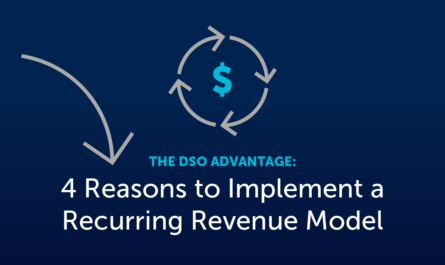By Mike Uretz
Operational Standardization
While helping a number of multi-clinic, multi-specialty groups acquire and implement electronic health records over the past few years. I have always made a point to find out the reasons why these large groups opted to integrate electronic records as part of their IT strategies.
There are a number of reasons both financial and clinical, but one reason that I hear consistently from group practice CEOs and COOs is that with the numerous providers and clinics in the organization, it is important to try to standardize on various parts of their operations; with none more important than clinical data. So with that goal in mind, where does a group dental practice start?
The first step would be to develop and utilize an internal clinical advisory committee. In this way, the Electronic Dental Records and its associated templates can be designed to standardize the way the clinical team treats patients.
Whether it is evidence-based procedures, patient education, or the use of treatment protocols, having an agreed to, consistent clinical strategy can be established and supported by the use of EDR technology within the group practice organization.
With a flexible EDR system in a large organization, even if certain clinicians wish to tweak their templates to match their particular way of providing care, at least it is possible for all the care between clinicians and the group practice locations to at least have vital elements in common.
A sophisticated group practice will develop libraries of templates, protocols, and treatment plans that can be reused by each dental team member without reinventing the wheel each time they need to create a document or ensure they are adhering to standards and procedures, mandated by corporate, insurance companies or government agencies.
Clinical Consistency
Another important reason to standardize on EDR within a group practice organization, especially in a multi-specialty environment, is that each clinician that touches the patient (GP dentist, periodontist, endodontist, etc.) has the same clinical data and medical history to refer to.
For example, past procedures, medications, systemic health history, and other critical bits of clinical information are available in real time at the fingertips of each member of the collaborating dental care team. Too often in a multi-practice organization, it is easy to not have critical information readily available if the patient travels between group practices locations. Or, even more common, as the dental clinician rotates between different practice locations.
From a CEO’s standpoint, a good EDR system can also hold their clinical staff accountable for providing optimal patient care. Through detailed and standardized reports and analysis, a group practice organization can know how where their clinicians stand regarding patient outcomes and whether or not they are following standard protocols.
For example, something as simple as providing listings of which dental team members have reviewed and signed off on their notes and which notes in the organization were still unsigned, can be a powerful tool for raising the standard of care and in some cases, reducing legal liability.
As a whole, the organization can use benchmarking data and see how one practice is performing in terms of patient outcomes and through-put care versus other practice locations.
In a large multiple practice organization, those patients needing additional care and recalls, can often get lost in the shuffle with a manual records system. With an EDR system there can be more revenue generated as well as better patient care by automating appropriate clinical alerts, recalls and regularly scheduled hygiene appointments.
Finally, a group practice with multiple offices can have better cash flow by utilizing EDR. That’s because, automated coding at the point of care can seamlessly flow through to the claims processing system reducing the need for a lot of manual intervention.
EDR Purchasing Guidelines for Group Practices
Although there are some similarities from a clinical standpoint when evaluating EDR for a group practice compared to an individual practice, there are a number of specific concerns that are specific to a multi-location group practice.
One of the biggest differences is in the areas of technology and support. Having been involved with IT for over 30 years, I am always concerned when a multi-practice group adopts EDR technology, because there are numerous technical items to evaluate that a small private practice doesn’t usually need to address.
Future-Proofing Your Group Practice EDR System
For example, the ability to aggregate, process, reconcile and report on data sourced from multiple practices puts a highly-increased level of complexity on the software that isn’t found in every EDR system. So, questions must be asked surrounding communications, interoperability and aggregation of data between multiple practices and the “scalability” or expandability of the EDR software that you are evaluating.
Finally, the scalability or ability to expand the database to anticipate and meet future needs is extremely important in a group practice or IT environment. Because of the sheer number of records that will be imported into the system over time, it is important to make sure that all the technology you are purchasing with your EDR is “scalable” or expandable.
As we discussed previously, another feature that would be essential when you’re talking about a group practice organization is the ability to produce common libraries of templates, protocols and treatment plans that can be used throughout the organization.
Ways to Save Money on EDR Support and Training
Because a group practices will typically have either an IT person or department, it is critical to make sure that the technology that the EDR system is built on is compatible with the technology that is currently being used throughout your organization.
One common mistake I’ve seen in the medical field is to purchase an EHR system that was based on a proprietary technology, especially for the database, which would prevent the organization’s IT folks from easily accessing or working with the data.
The customer support model in a group practice can also be a big deal when contracting for EDR software. In many cases, if the group practice organization is willing to provide “first level support” for the software, then the software vendor might be willing to reduce your yearly support maintenance costs.
First level support can be as simple as any issue that is found with the EDR system first goes to the IT department to triage with the vendor instead of the user contacting the vendor directly. Again, with a group practice because there is typically IT support within the organization, it is worthwhile to evaluate whether or not costs can be reduced by utilizing this resource.
Also, from a cost standpoint, recognize that with a growing multi-practice group there’s a good chance that over a period of time you’ll add practices and clinicians to the mix. So, when negotiating your deal for EDR it’s important that you put some kind of price freeze for a period of time, so that you can purchase licenses and services at the same discounted amount as you grow the organization.
With a group practice there is also more of an opportunity for the vendor to do some nickel and diming after you purchase your system. This is based on the fact that with a multi-practice organization there will probably be more opportunity for various interfaces and inter-practice communications that if not addressed in the initial proposals, could potentially add considerably to the cost of the system after the fact.
With implementation and training of a larger group practice there is also an opportunity to save additional costs by using what is known as the “Train the Trainer” approach. With an individual practice,, typically the vendor will train each staff person individually depending on their roles.
However, in a larger group practice environment there can be multiple people in similar roles. So the best and most cost-effective way to accomplish training in an environment like this is to designate a few people as the EDR experts in the group practice who will be trained by the vendor.
In turn, the internal EDR experts are responsible training additional staff within the group practice. This saves money in two ways: First, it takes less time for the vendor to train a smaller group of professionals, so that saves money. And, once your internal people are trained and can train additional dental team members, then there is no need to call upon the vendor and be charged each time a new person comes on board.
Closing the Meaningful Use Loophole
What’s more, with the growth of meaningful use and electronic records, if you have a number of clinicians and if you do have a good percentage of Medicaid reimbursement, then your group practice organization can stand to recognize a fair amount of reimbursement provided you utilize a ‘Meaningful Use Certified” EDR system. At up to $67,000 per clinical provider of reimbursement if you have multiple providers this can certainly add up.
If you do decide to go the route of the meaningful use certified EDR system, make sure that contractually your software vendor makes the appropriate commitments to continue to support meaningful use. I have seen too many contracts where “Meaningful Use” warranties had no teeth (no pun intended) should the vendor fail to provide eligibility for their customer.
Finally, if you are a multi-practice group with a number of in-house specialists , having the ability to interface with a health information exchange can foster referrals from other GP practices that also have electronic records systems.
Features such as the ability to interface with an HIE (health information exchange) are typically lost in the shuffle. The onus is typically on you as an organization to bring up whether these capabilities are available in the EDR system you are evaluating.
If a software vendor does tell you that their EDR system does provide interoperability with other systems and technologies, then make sure they either give you a demonstration or give you specifics on how this works… And a guarantee to the fact when you decide to purchase.
Mike Uretz is a 30-year healthcare technology veteran and nationally-recognized electronic health records (EHR) and healthcare software expert. As Executive Director of the EHR Group, Mike has consulted hundreds of individual practices and larger multi-clinic groups to help them properly evaluate and select their EHR solutions, structure and negotiate contracts, and provide management and oversight for their implementations. In addition, Mike has been a member of the Certification
Commission for Health Information Technology (CCHIT) EHR vendor certification work group, and has helped a number of statewide Regional Extension Centers, under the Federal Meaningful Use Incentive Program acquire EHR technology. As co-chairman of the National Regional Extension Center Program’s best practices advisory committee for EHR Contracts, Mike has been instrumental in developing standards for structuring vendor contracts and pricing for use by state programs nationwide
Mike is now applying his wealth of knowledge and experience to the dental industry, including group practice owners, to consult them on dental EHR software best practices, and to help them avoid the pitfalls experienced by other healthcare professionals.
Mike is also the founder and editorial director of DentalSoftwareAdvisor.com a trusted, an objective online resource on all matters related to dental software. Mike can be contacted at [email protected] or 425-434-7102.





